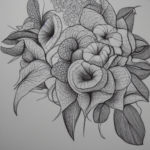Viola canadensis L., Canada violet, is a short perennial a part of the Violet Family. It has rhizomes that are thick and stolons that are slender that grow to be about 10 inches. The leaves have pointed tips and toothed margins with an oval-shape or can be heart-like in appearance, with stalks that can become very long. The flowers are separate from the axils of the leaves with a yellow center, white petals on top, and purple below. The petal bottoms have a dark lining, spurs, and at the sides of the petals, at the base, they have hairs. During the months between April and July the pods of the flower split in 3s to become valves.
This plant can be found in the woods of Oregon to northeast Washington, Utah, Idaho, New Mexico to Montana from the Arizona Rockies, and eastern North America, whether it is dry or moist.

A poultice made from the whole plant can be applied externally to help heal boils and abrasions of the skin. A root tea can be made to ease pain caused in the bladder region or use a high dose to induce vomiting after eating something poisonous or rancid.
WARNING: The roots from all the plants from the violet family can induce vomiting so use with caution, low doses are recommended unless absolutely necessary.









